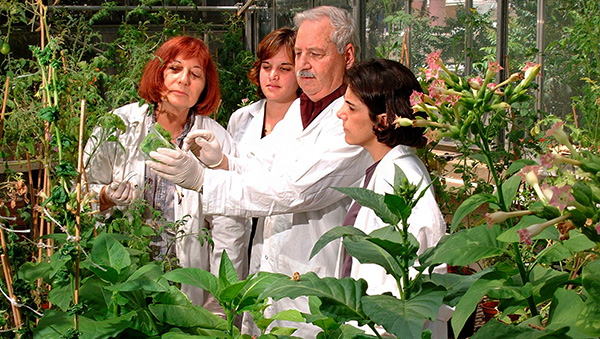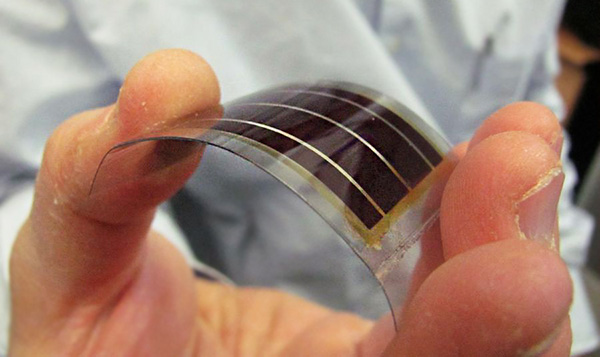A Nobel Prize In Chemistry
When Avram Hershko was a post-doctorate fellow at the University of California in San Francisco, he made an unexpected discovery that led to his receiving the 2004 Nobel Prize in Chemistry.
The professor at the Technion-Israel Institute of Technology says that he was interested in examining the mechanism that causes protein degradation in living cells. He assumed it had to do with running out of energy. Surprisingly, his experiments revealed the opposite: Proteins need energy to fall apart. “It was serendipity,” he recalls.
Rather than abandoning the research due to this unexpected result, he and his Technion graduate student, Aaron Ciechanover, spent years unraveling the mystery. They found that for protein degradation to occur, a “tag” or marker called ubiquitin must selectively attach to the protein, requiring energy for the process. “The lesson is that when you discover something that is not what you asked for, you should follow it up,” says the Nobel laureate.
Serendipity, or finding something you were not looking for, was also responsible for these five significant Israeli innovations, among countless others.
Drought-Resistant Plants
Plant biologist Shimon Gepstein’s globally hailed technology for producing drought-resistant rice, wheat, sugar beets, cotton, millet, and other food crops was created when he and his lab team at the Technion-Israel Institute of Technology in Haifa forgot to water some tobacco plants they had genetically engineered for an experiment in prolonging growth period and shelf life.
To their surprise, the parched plants bounced back to life when re-watered after several weeks. That is how Gepstein discovered that the plant hormone cytokinin increases a plant’s ability to withstand drought.
The technology was patented and licensed to a California agro-tech company, which sub-licensed it to seed companies that sell the product in the United States and abroad. In July 2013, a Chinese patent was approved, increasing the market for Gepstein’s unexpected discovery.

A lucky discovery in the Israeli laboratory of Technion Prof. Emeritus Shimon Gepstein led to a revolutionary advance in growing food crops with higher yields and resistance to drought and other stresses. Photo: courtesy.
Dog vaccine
Dr. Shimon Harrus was attempting to determine how long ticks must be attached to a dogs fur in order to transmit CMT, a sometimes fatal tick-borne disease. In the process, he unintentionally found something much better: the world’s first vaccine against CMT in dogs.
“I was using bacteria I cultured in my lab, and all of a sudden I realized the two dogs in our experiment did not become sick, and the ticks I put on the dogs did not become infected,” Harrus stated. “Then, we performed a big study and we realized something important was going on.”
The unexpected results of the experiments done by Harrus and his lab partner, Dr. Gad Baneth, led to a CMT vaccine that was licensed out by Yissum, the tech-transfer company of the Hebrew University of Jerusalem, to a Brazilian company. They are now working toward commercializing the vaccine.
Silicon-free solar cells
Israeli chemist Jonathan Goldstein stumbled across a novel way to produce inexpensive, clean solar energy while he was experimenting with titanium dioxide to make toothpaste flow more easily from a newfangled toothbrush he had invented. The cheap white powder Goldstein discovered is known to be sensitive to light when treated with an absorbable dye. This led him to drop the toothbrush project and go in a direction nobody had gone before.
3GSolar, the Jerusalem company born in 2003 of that chance finding, is now focusing on indoor applications for its silicon-free photovoltaic cells printed on plastic. Goldstein says that 3GSolar cells perform three times better than cells made with silicon (which is difficult to work with and dispose of) and are especially suited to the emerging IoT and sensor markets. A Chinese investor is soon building a plant to produce 3GSolar’s dye-cell solar energy modules.
Assessing climate change
Professor Colin Price of Tel Aviv University’s Department of Geophysical, Atmospheric, and Planetary Sciences and his graduate student Yuval Reuveni found out by accident in 2009 that observing ordinary lightning strikes can provide a definitive and reliable tool for measuring the sun’s rotation even when sunspots aren’t visible. This is a new way for meteorologists, ecologists, and space scientists to study the effects of sunspots on climate and the overall interaction between sun and Earth.
Price says that another unanticipated discovery happened in 2013 as he and PhD candidate Israel Silber used simple radio antennae to measure radio waves reflecting back to Earth from the ionosphere. They saw that weaker signals seem to indicate greater fluctuations in temperature in the upper atmosphere, offering a new and cost-effective way to keep tabs on climate change.
Nano-lubricants
Revolutionary inorganic fullerene-like tungsten disulfide (IF) nanoparticles, created in 1992 in the lab of Professor Reshef Tenne at the Weizmann Institute of Science in Rehovot, have become indispensable in manufacturing lubricating oils, greases, coatings, metal working fluids, polymers, and composites.
Menachem Genut, a member of the group that discovered the nanoparticles and successfully synthesized them, recalled that “IF was discovered by serendipity. At the Weizmann Institute, we were looking for a technology to convert solar energy into electricity. The result was completely unexpected. We discovered these nanoparticles which have very interesting properties. They act as excellent lubricants, have great shock absorbing powers, and are also efficient semiconductors.”
Originally posted at Israel21c.




